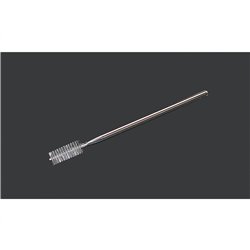Static grass puffer bottles work by manually charging model grass fibres with static electricity. When the charged...
No products
Product successfully added to your shopping cart
There are 0 items in your cart. There is 1 item in your cart.
Search Tips
How do I build up a smooth coat of paint with a can or airbrush?
Spray cans and airbrushes are favoured tools with modellers because of the smooth and life-like finishes that they can create on a model. For many newcomers, this can be a tricky art to master and can take time to achieve. Some may be less than satisfied with their initial results and may decide that reverting back to the trusted paintbrush is the best option. As with many new skills, it can take time to achieve the correct balance and inevitably those who take a trial and error approach can end up being rewarded for their perseverance.
Spray paints from a can are already at the ideal consistency for spraying. Inevitably acrylic paints from an airbrush will need to be thinned before use. The exact ratio of thinner to paint comes down to a matter of personal choice and is inevitably driven by experience as to what works best, especially when using products from different manufacturers. Many modellers prefer a ratio of around 50:50 paint to thinner and most will offer the recommendation that the resultant mix should have the consistency of semi-skimmed milk. It is a good idea to try and quantify the exact ratio of what works best as subsequent coats mixed to a different consistency may produce a tell-tale difference on the model.
Likewise, compressor pressure is also a matter of choice driven by personal experience. Perhaps the ideal place to start is a mid-range value such as 20-25 psi. One other aspect of airbrush usage that is useful to have in place is a water trap. Compressed air inevitably has a high temperature. When it leaves the compressor this air can cool rapidly with the resultant condensation of water droplets. If left unchecked these can find their way into the airflow and cause the airbrush to spit, which will create a spattered and uneven paint coat. Some compressors may have a built-in water trap, if not a suitable trap can easily be attached between the airline and the airbrush.
Whether using a spray can or airbrush there are a few points to bear in mind that should help to ensure the best finish possible. Keep a steady speed when moving across the surface of the model. Wherever possible try to spray in regular lines rather than random patterns. Resist the temptation to linger in certain areas as this can result in longer drying times which might then be visible when the paint dries. Keep the pressure constant in order to deliver a continuous and uniform flow. Never start or stop the paint flow on the model, always start before the model and finish when clear of the model. This is especially useful in delivering an even coat and avoids unwanted pooling of paint or paint runs on the model.
Click here to receive the tips weekly in your mailbox. You can unsubscribe at any time.










